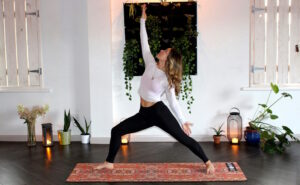
Mindful stretching in Pilates is a transformative practice that combines the principles of Pilates with mindfulness techniques to enhance flexibility, mobility, and overall well-being. In this comprehensive guide, we’ll explore the concept of mindful stretching within the context of Pilates, clarify what mindful Pilates entails, provide insights into how to perform mindful stretching, delve into the types of stretching commonly found in Pilates, and discuss the diverse benefits that Pilates offers for improving flexibility and stretching.
What is mindful Pilates?
Mindful Pilates is a holistic approach to Pilates that incorporates mindfulness principles into the practice. It emphasizes being fully present in the moment, paying attention to the sensations in your body, and cultivating awareness of your movements and breath during Pilates exercises. Mindful Pilates involves:
· Intention: Setting clear intentions for your practice, whether it’s to increase flexibility, improve posture, or reduce tension.
· Breath Awareness: Coordinating your breath with each movement, creating a rhythm that enhances relaxation and mindfulness.
· Conscious Movement: Engaging in controlled, deliberate movements that require focused attention and mental presence.
· Mind-Body Connection: Developing a deep awareness of your body’s alignment, muscular engagement, and response to Pilates movements.
· Stress Reduction: Using Pilates as a means to reduce stress and promote mental and emotional well-being.
How to do mindful stretching?
Mindful stretching in Pilates involves a deliberate and attentive approach to stretching exercises. Here’s how to incorporate mindfulness into your stretching routine:
1. Set an Intention: Begin by setting a clear intention for your stretching practice. For example, you may aim to release tension in your shoulders or improve hamstring flexibility.
2. Focus on Breath: Pay close attention to your breath. Inhale deeply through your nose and exhale fully through your mouth. Coordinate your breath with each stretch, allowing it to guide your movements.
3. Move Slowly: Perform stretches slowly and deliberately. Avoid rushing or bouncing, as this can lead to injury. Instead, focus on controlled, gradual movements.
4. Sensory Awareness: Tune into the sensations in your body as you stretch. Notice the feeling of the stretch, any areas of tension, and the gradual release of muscle tightness.
5. Mindful Release: When you encounter resistance in a stretch, instead of forcing it, try to relax into it. Breathe deeply and visualize the tension melting away.
6. Stay Present: Keep your mind focused on the stretch and your breath. If your thoughts wander, gently bring your attention back to the present moment.
7. Progress Gradually: Over time, you may find that your flexibility improves. Be patient and allow your body to adapt naturally to the practice.
What type of stretching is Pilates?
Pilates incorporates primarily two types of stretching:
1. Static Stretching: Static stretching involves holding a stretch in a fixed position for a period of time, typically 15-30 seconds. Pilates uses static stretching to improve flexibility and range of motion in specific muscle groups.
2. Dynamic Stretching: Dynamic stretching in Pilates involves controlled, repetitive movements that gently stretch and warm up the muscles. It prepares the body for more extensive movement and helps prevent injury.
What is Pilates good for stretching?
Pilates offers numerous benefits for stretching and improving flexibility:
· Improved Range of Motion: Regular Pilates practice can enhance your joint mobility and overall range of motion, making everyday movements easier and more comfortable.
· Posture Correction: Pilates exercises focus on proper alignment, which can alleviate muscle imbalances and promote better posture.
· Muscle Lengthening: Pilates stretching exercises target specific muscle groups, encouraging them to lengthen and release tension.
· Injury Prevention: Improved flexibility can reduce the risk of injuries, as flexible muscles and joints are less prone to strains and sprains.
· Stress Reduction: The mindful approach of Pilates enhances relaxation, which can further improve the effectiveness of stretching exercises.
· Mind-Body Connection: Pilates fosters a strong mind-body connection, allowing you to become more aware of your body’s sensations and needs during stretching.
· Functional Flexibility: Pilates helps improve functional flexibility, allowing you to move with greater ease and grace in your daily activities.
Summarizing Mindful Stretching in Pilates
In summary, mindful stretching in Pilates is a practice that combines the principles of Pilates with mindfulness techniques to enhance flexibility, mobility, and overall well-being. Mindful Pilates involves setting intentions, coordinating breath, moving slowly, and developing a deep mind-body connection during stretching exercises. Pilates incorporates both static and dynamic stretching to improve range of motion, correct posture, lengthen muscles, prevent injuries, reduce stress, and enhance the mind-body connection. By embracing mindful stretching in Pilates, you can experience the holistic benefits of improved flexibility and a more profound connection with your body.